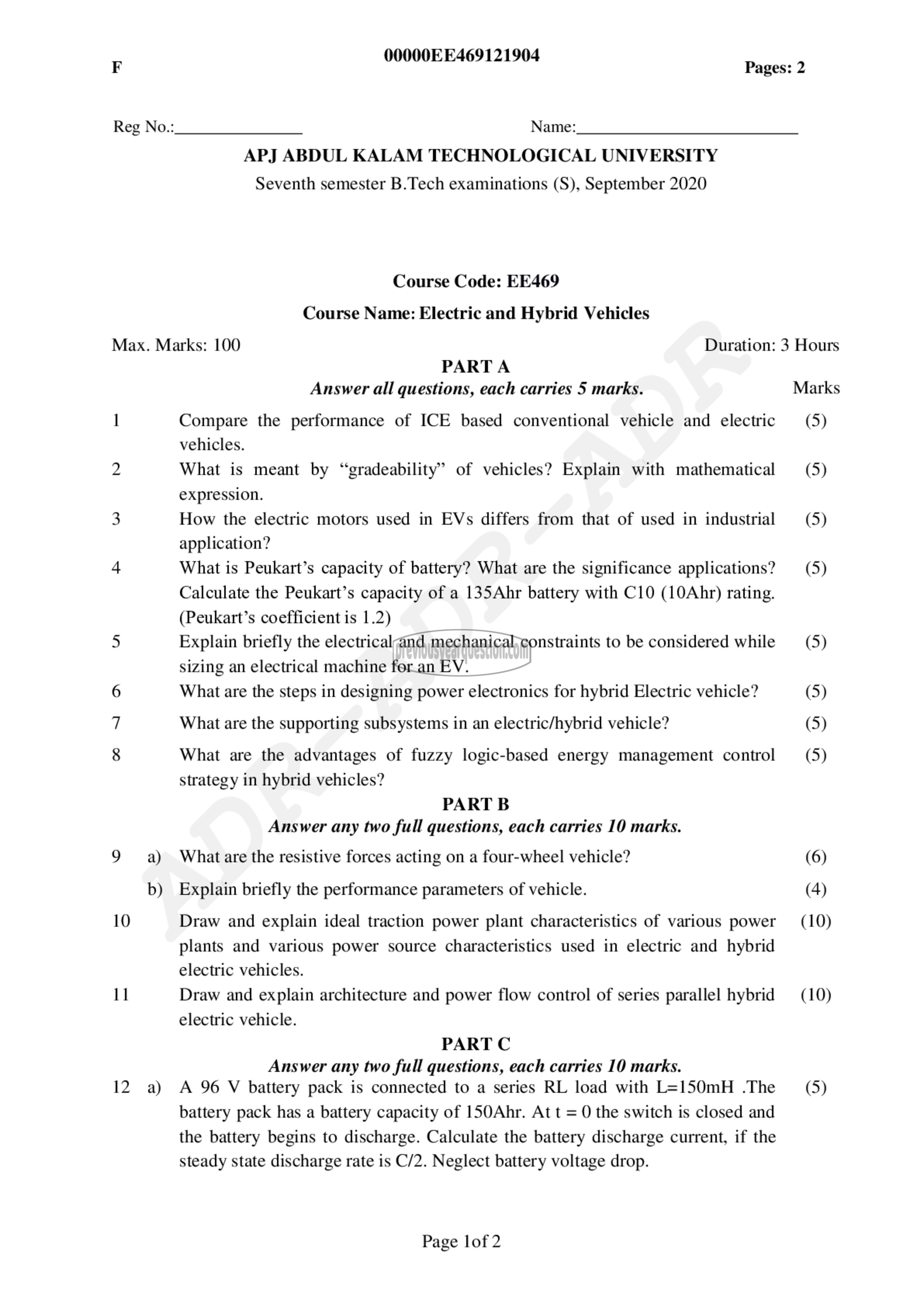APJ ABDUL KALAM TECHNOLOGICAL UNIVERSITY Previous Years Question Paper & Answer
Semester : SEMESTER 7
Subject : Electric and Hybrid Vehicles
Year : 2020
Term : SEPTEMBER
Scheme : 2015 Full Time
Course Code : EE 469
Page:1
00000EE469121904 Pages: 2
Reg No.: Name:
APJ ABDUL KALAM TECHNOLOGICAL UNIVERSITY
Seventh semester B.Tech examinations (S), September 2020
Course Code: EE469
Course Name: Electric and Hybrid Vehicles
Max. Marks: 100 Duration: 3 Hours
PARTA
Answer all questions, each carries 5 marks. Marks
1 Compare the performance of ICE based conventional vehicle and electric (5)
vehicles.
2 What is meant by “gradeability’” of vehicles? Explain with mathematical (5)
expression.
3 How the electric motors used in EVs differs from that of used in industrial (5)
application?
4 What is Peukart’s capacity of battery? What are the significance applications? (5)
Calculate the Peukart’s capacity of a 135Ahr battery with C10 (10Ahr) rating.
(Peukart’s coefficient is 1.2)
5 Explain briefly the electrical and mechanical constraints to be considered while (5)
sizing an electrical machine for an EV.
6 What are the steps in designing power electronics for hybrid Electric vehicle? (5)
7 What are the supporting subsystems in an electric/hybrid vehicle? (5)
8 What are the advantages of fuzzy logic-based energy management control (5)
strategy in hybrid vehicles?
PART تا
Answer any two full questions, each carries 10 marks.
9 a) Whatare the resistive forces acting on a four-wheel vehicle? (6)
b) Explain briefly the performance parameters of vehicle. (4)
10 Draw and explain ideal traction power plant characteristics of various power (10)
plants and various power source characteristics used in electric and hybrid
electric vehicles.
11 Draw and explain architecture and power flow control of series parallel hybrid (10)
electric vehicle.
PART C
Answer any two full questions, each carries 10 marks.
12 a) A 96 V battery pack is connected to a series RL load with L=150mH .The (5)
battery pack has a battery capacity of 150Ahr. At t = 0 the switch is closed and
the battery begins to discharge. Calculate the battery discharge current, if the
steady state discharge rate is C/2. Neglect battery voltage drop.
Page lof 2
